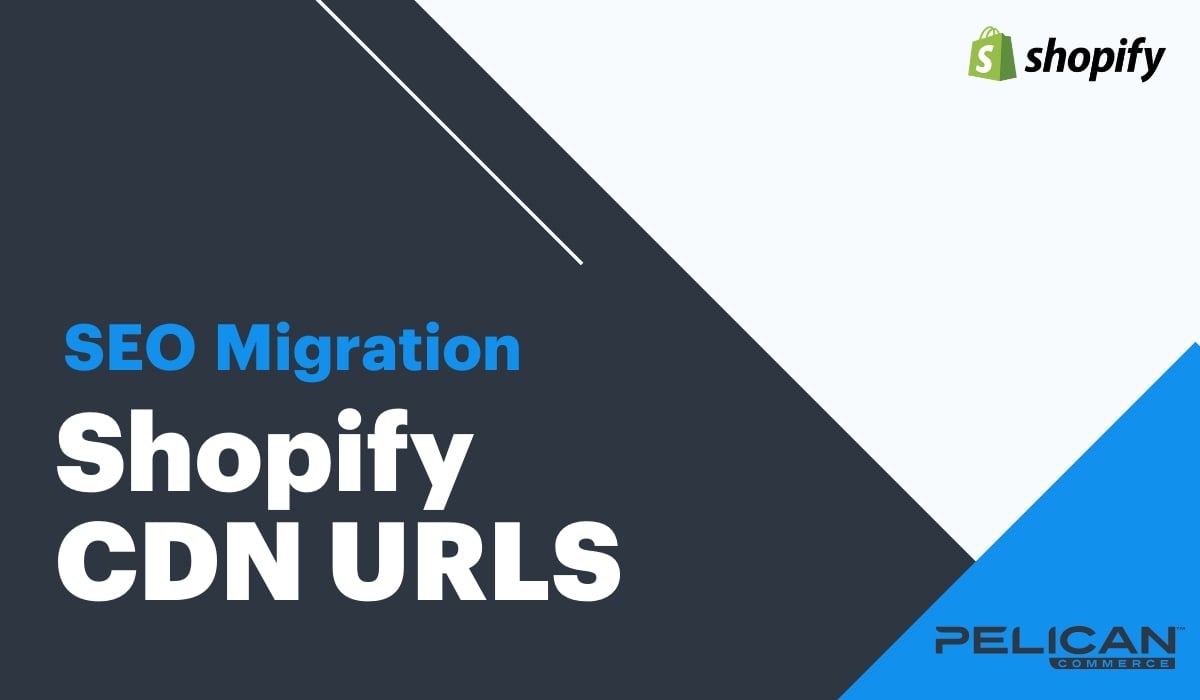How do Shopify CDN URLs work for bulk uploading media files?
If your website is on the Shopify platform, then you're using the Shopify CDN to host your images, PDFs, and other digital assets. When you add a product image to your product pages, embed an image in your product descriptions, or add images to your blog. All of those images are hosted on Shopify's CDN to optimize the speed and delivery of those images on your website.
How can I add assets to the Shopify CDN?
When you're logged into your Shopify admin, you can head on over to Settings in the lower-left hand corner. Then click on the "Files" area on the settings screen.

Inside the files area, you can upload as many files as you want. Currently, Shopify does not have a limit as to how many digital assets you can upload and host on their platform. You have access to the URL so that you can use the image for various useful tasks like uploading products to other marketplace channels like Amazon, Walmart, or even use the image inside your email signature.

Bulk Uploading and Hosting Embedded Images
When migrating your website to Shopify, you may have images embedded on your existing website inside the product descriptions or inside the body of your blog posts. Also, commonly some product types have PDF product manuals embedded on the page. This just means the URL is added to a word or an image in the content, making it easy for the consumer to either see the image or download the manual. This type of embedding is not structured in the database in a way that it can be migrated over easily.
The solution we use in our migration projects at Pelican Commerce is to capture all the product data, blog data, and content page data, in both plain text and HTML format. We then use a tool to scrape through the data for URLs, and then we bulk download the image files or PDF files. Since Shopify CDN URL is unique to the Shopify store, we bulk upload those files to the CDN inside this "Files" settings page. We then re-map in bulk all the new CDN URLs, and the content displays correctly, and when you shut down your old server, there will be no issues with your content displayed on your pages. This is a common problem for migration services that use an app or plugin to migrate your data. But we have solved the issue offering a complete migration for all format types.
Shopify CDN URL Unique Format
The Shopify CDN URL is unique to the specific Shopify store itself. That makes uploading and hosting for bulk edits much easier when using the data to migrate embedded assets or when working on Amazon and Walmart uploading projects. Here is an example of what a Shopify CDN URL looks like:
The first part of the URL is Shopify account-specific: https://cdn.shopify.com/s/files/1/2779/6736/files/
The last part of the URL is the name of the file you uploaded: rolled-bathroom-towels.jpg
Another scenario this is useful is when a supplier gives you a spreadsheet with product data but no hosted images URLs. They have a reference to the image file name in the spreadsheet. Then they provide you with a folder of images. You can dump those images into your Shopify CDN area, then add the CDN URL in front of the image reference name in your spreadsheet, then upload using that URL and your all set. Any system out there like Amazon, Walmart, and even Shopify will accept that asset URL and download the image into their system the first time you upload the file.
If you need any help bulk transferring data with embedded images, PDFs, or other assets, or you need help with the Shopify CDN, then reach out to us anytime, and we'll be glad to help.
Common Questions and Answers
Q: How does Shopify CDN work?
A: Shopify CDN (Content Delivery Network) distributes your store’s media files (like images, videos, and other assets) across a global network of servers. This ensures faster load times and better performance by serving content from the server closest to the user.
Q: Can I bulk upload files to Shopify CDN?
A: Yes, you can bulk upload files to Shopify CDN. This is typically done through the Shopify admin interface or by using apps and tools that support bulk uploading, which then distribute the files across Shopify’s CDN for optimized delivery.
Q: What are the benefits of using Shopify CDN for media files?
A: Using Shopify CDN for media files improves page load speeds, enhances user experience, and reduces server load. It ensures that media assets are quickly and efficiently delivered to customers worldwide.
Q: How do I manage and organize files uploaded to Shopify CDN?
A: You can manage and organize files in Shopify’s admin by navigating to “Settings” > “Files.” From here, you can upload new files, organize existing ones, and copy URLs to use in your store.
Q: Are there any limitations to the types of files I can upload to Shopify CDN?
A: Shopify CDN supports a wide range of file types, including images, videos, documents, and more. However, there may be size limitations for individual files. It’s best to check Shopify’s documentation for the latest specifications.
Q: How can I optimize my media files before uploading to Shopify CDN?
A: To optimize media files, use image compression tools, ensure proper file formats, and use descriptive file names for SEO. Optimizing files before uploading helps improve load times and reduces bandwidth usage.

